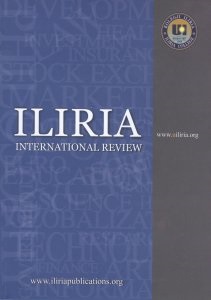Use and Abuse of Reliability in Research: An Analysis of Postgraduate Theses at Catholic University of Eastern Africa, Kenya
Use and Abuse of Reliability in Research: An Analysis of Postgraduate Theses at Catholic University of Eastern Africa, Kenya
Author(s): Francis Omillo OkumuSubject(s): Higher Education , Methodology and research technology
Published by: Kolegji ILIRIA and Felix-Verlag
Keywords: reliability; use and abuse; postgraduates theses;
Summary/Abstract: Reliability is a classical quality measurement criterion that checks stability, equivalence, internal consistency and absence of errors in the measurement instruments. Due to the need for accurate and reliable results for decision making, a lot of emphasis has been put on proper use of evaluative measurement criteria. Reliability as a criterion of evaluating measurement tools is the focus of this paper. The study aims at 1) finding out the extent to which reliability has been wrongly used; and 2) establishing how Likert type scale has been abused among postgraduates? Classical test theory guided the study to answer the research questions. Descriptive research design was adopted to direct in collection and analysis of data. The study population is theses authored by postgraduate candidates for the years 2018, 2017 and 2016 in Catholic university of Eastern Africa, Gaba Campus. Out of 126 theses filed at the university library, 40 were sampled for the study using the 30% rule. The researchers reviewed literature on research from Loreto library and e-libraries using search engines. Data was collected using review of the sampled theses guided by structured tools developed from the research questions. Collected data was analyzed using descriptive statistics. Study findings revealed that most of the theses (45%) adopted Test-retest, followed by Cronbach (42.4%) as reliability test tests. Test-retest users confused right techniques and coefficients to determine and interpret as stability of measurement instrument. Cronbach was largely pinned at 0.7 alpha without proper interpretation of levels of internal consistency. The third most favored techniques was Split half (10%). The academicians who used split-half did not fix the inherent weakness of underestimation. Lastly the study found out that almost all of the theses used a pentatonic Likert-type scale and considered it as an interval scale instead of ordinal scale of measure. The study suggests that teachers of research should strengthen knowledge dissemination on quality measurement in tools of research by observing maximincon principle. Secondly young researcher should be ready to learn new techniques of quality measurement for reliable and accurate research outputs.
Journal: ILIRIA International Review
- Issue Year: 10/2020
- Issue No: 1
- Page Range: 341-359
- Page Count: 19
- Language: English

